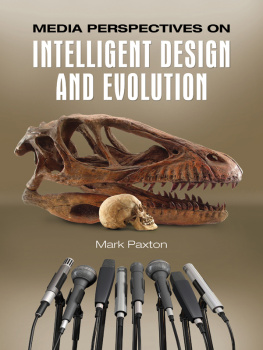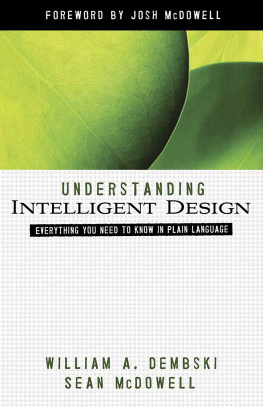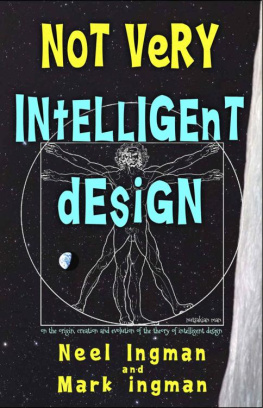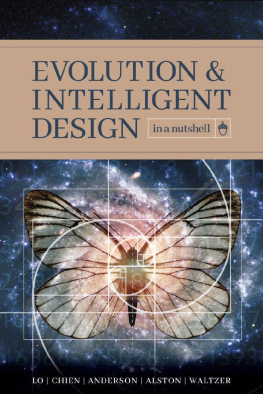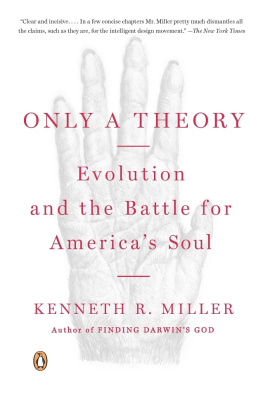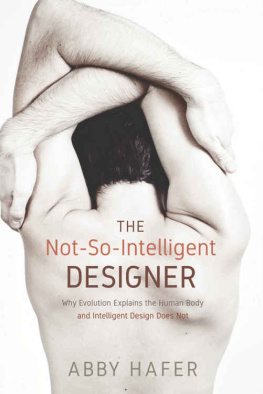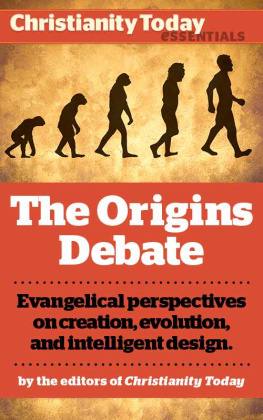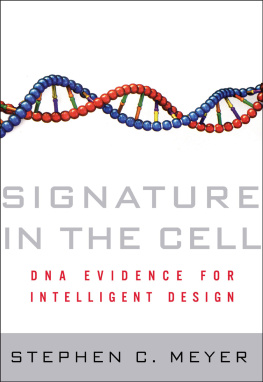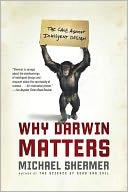APPENDIX A
Names in the News
CHARLES DARWIN (18091882)
We must, however, acknowledge, as it seems to me, that man with all his noble qualitiesstill bears in his bodily frame the indelible stamp of his lowly origin.
Charles Robert Darwin was born in Shrewsbury, Shropshire, England (about 160 miles northwest of London), on February 12, 1809, into an affluent, well-known family. Charles' father, Robert Waring Darwin (17661848), was a physician. His mother, Susannah Wedgwood Darwin (17651817)the heir to 25,000was the daughter of Josiah Wedgwood, one of the founders of the Wedgwood pottery company and a noted opponent of slavery. Darwin, the fifth of six children, was baptized in Shrewsbury's Anglican church. He had one brother (Erasmus, named after his eccentric grandfather), three older sisters (Marianne, Caroline, and Susanne), and one younger sister (Emily Catherine). He attended Shrewsbury Grammar School but preferred hunting and collecting insects to learning Greek and Latin. In the autumn of 1825, he enrolled at Edinburgh University to study medicine. There, he learned taxidermy from a freed Guyanan slave, John Edmonstone; this was a skill that would prove useful to him later. However, he was sickened by watching surgery and dropped out of college.
In 1827, after being scolded by his father that you care for nothing but shooting, dogs, and rat-catching, and you will be a disgrace to yourself and your family, Darwin enrolled at Cambridge University and began studying to join the clergy. However, he remained interested in collecting insects, and it was at Cambridge that he began to appreciate the vast diversity of species, an appreciation that springs inevitably from an interest in insects. While at Cambridge, he was mentored by Robert Grant, an admirer of Darwin's grandfather Erasmus and a supporter of Lamarck's theory of inheritance of acquired characteristics. Darwin also learned about natural theology, which sought to understand God by studying God's creation (i.e., nature). To advocates of natural theology, God's goodness was visible in the progression of life from lower to higher forms, culminating in the special creation of humans. At Cambridge, Darwin read William Paley's Natural Theology, which argued that nature's complexity was evidence of design and that design required a designer. Although Darwin studied and enjoyed Paley's book, he later rejected Paley's arguments, now that the law of natural selection has been discovered. While at Cambridge, Darwin lived in the same dormitory rooms that had housed William Paley seventy years earlier. Today, those roomswhich are now officesare marked by a statue of Darwin in the adjacent garden.
At Cambridge, Darwin had traditional religious beliefs but a noticeable lack of religious zeal. Although he later claimed that some of his time at Cambridge was sadly wasted, Darwin made his first scientific presentation there (about Flustra, a bryozoan), and in 1831 he earned a bachelor's degree in theology, ranking tenth among 178 non-honors students. However, it was a great era of exploration, and Darwin was drawn to the prospect of travel; he hoped to delay his religious career until he had visited exotic locales.
In the 1830s, the British government commissioned the HMS Beagle to conduct expeditions devoted to the noblest purpose, the acquisition of knowledge. The Beagle's captain was the temperamental 26-year-old Robert FitzRoy, and FitzRoy needed a naturalist for the voyage. He wanted the naturalist to be the Cambridge cleric-botanist John Henslow, a friend of Darwin's. Henslow declined FitzRoy's offer but recommended Darwin for the job. Darwin's father did not want him to go on the voyage, but Josiah Wedgwood (Darwin's' uncle) intervened, convincing Darwin's father to let his son go on the cruise. Darwin later noted that he was resolved to go at all hazards.
The Beagle sailed from Plymouth, England, on December 27, 1831. Darwin's experiences were overwhelminghe hiked through a jungle in Brazil, dug up fossils in Argentina, witnessed an exploding volcano, withstood an earthquake that raised shellfish beds 3 above the shoreline, and studied coral reefs. By the end of his voyage, Darwin had written 1,383 pages of notes about geology and 368 pages about zoology; entered 770 pages in his diary; preserved 1,529 specimens; and labeled 3,907 skins, bones, and other specimens. He had also seen numerous interesting geological formations and new habitats (e.g., the Andes and tropical islands). His voyage lasted fifty-eight months, forty-three of which were spent in South America.
While at sea, Darwin read Volume 1 of Charles Lyell's Principles of Geology, which had been given to him by Captain FitzRoy. Lyell documented that ancient Earth had been molded by the same slow, directionless forces that shape Earth today. When the Beagle docked at St. Jago, Lyell's claim that land slowly rises and falls was confirmed when Darwin found a band of coral fragments and shells high among the volcanic cliffs. Later, when exploring the Andes, Darwin found fossil trees that had grown on a sandy, shell-littered beach. Lyell showed that Earth is very old and that Earth's history had been characterized by the extinction and appearance of innumerable species. This was the world that Darwin sought to explain.
In September of 1835, the Beagle docked for a month-long stay at a group of thirteen volcanic islands called the Galapagos Islands. These islands, which straddle the equator, are about 620 miles west of Ecuador. Darwin later noted that the islands' songbirdscalled finchesappeared as if one species had been taken and modified for different ends. Darwin was told by Nicholas Lawson that local inhabitants could tell the home island of a tortoise just by examining its shell. As Darwin noted later, By far the most remarkable feature in the natural history of this archipelago [is] that the different islands to a considerable extent are inhabited by a different set of beings. This intrigued Darwin, for it suggested that each island had its own group of organisms. Did each island really have a unique species of tortoise? Did each island have a unique species of finch? Had there been a separate creation event at each island? Darwin was initially skeptical: I never dreamed that islands 50 or 60 miles apart, and most of them in sight of each other, formed of precisely the same rocks, placed under a quite similar climate, rising to nearly equal height, would have been differently tenanted.
After leaving the Galapagos, the Beagle sailed to Tahiti, New Zealand, and Australia, during which time Darwin pondered the questions he had been developing about life's diversity. Soon after Darwin returned to England in October 1836, ornithologist John Gould of the London Zoological Society examined the birds that Darwin and others had collected on the Galapagos Islands and told Darwin that each island did, in fact, house a separate species of finch.
Back in England, Darwin lived on Fitzwilliam Street in Cambridge from 1836 to 1837. Today, his residence is marked by a small plaque.
In September of 1838, Darwin read for amusement Thomas Malthus' An Essay on the Principles of Population. Malthus argued that populations could grow exponentially (e.g., 2, 4, 8, 16, 32, 64, 128, 256, etc.) but that resources such as food can increase only linearly (e.g., 1, 2, 3, 4, 5, 6, 7, etc.). Malthus' book had a tremendous influence on Darwin: What would be the consequences of a constant struggle for existence (as Malthus proposed) that persisted for millions of years (as Lyell proposed)?
As Darwin pondered this question, he realized that Malthus' struggle throughout the history of Lyell's ancient Earth might explain the great diversity of plants and animals that he had encountered on his travels. As he later wrote in his autobiography,

